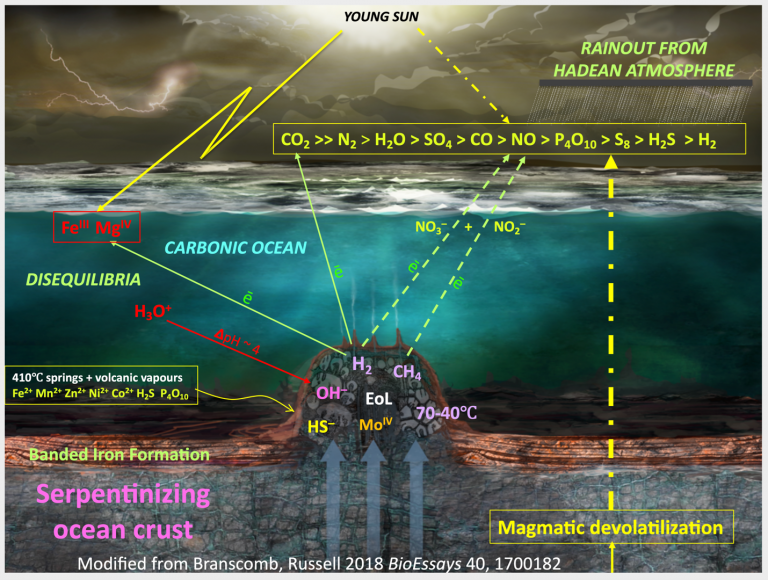GEE Seminar - Prof. Michael Russell, University of Turin
17 November 2021, 12:00 pm–1:00 pm

Title: 'Order from Order: How Life Emerged from a Convection-driven Submarine Spring'
Event Information
Open to
- UCL staff | UCL students | UCL alumni
Availability
- Yes
Organiser
-
Amy Godfrey
Location
-
Zoom---
Academic Host: John Allen
Abstract: All the constituents for life’s emergence – CO2,H2,CH4,NO2−,HPO43−,HS−,Fe,Ni,Co,Zn,Mo – were focused at a submarine alkaline vent 4,4 billion years ago. And the redox (Δ0.8 V) and pH (Δ5) disequilibria across the vent precipitates were also appropriate drivers. (There was no land and thus no “warm little ponds”). In these conditions carboxylic and amino acids, the active centers of the metalloenzymes and condensed phosphates with reactive short peptides as their nests, are known to form, and hydrazine, bases, and methyl alcohol are likely. So far, so apparently simple. But of course the concatenations of life are not chemistry, or “not just chemistry” and we can take it from Darwin that “in the beginning was complexity”. For example, nanoengines and pumps are mandatory as processors to convert the available ‘free’ energy for (proto)biosynthesis through reciprocal gating mechanisms, implying the involvement of what Carter and Wills call, in their far-reaching paper, “Strange Loops in Bioenergetics, Genetics, and Catalysis”. How might such requirements for complex disequilibria converters be satisfied, not only for life’s emergence, but also to guarantee its evolvable continuities? Well, the main precipitate at the alkaline vents would have comprised billions upon billions of the 2D, double layered, variable valence, redox sensitive, physically flexible, solid electrolyte mineral, green rust or fougerite, a hydrated ferrous/ferric oxyhydroxide ([FeIIFeIII(OH)12][CO3].3H2O) dosed with transition metals and capable of absorbing a variety of anions. These nanoengines have been shown to mediate the reactions just mentioned. These are remarkable and unexpected characteristics for a mineral known to have been the precursor of the Banded Iron Formations that are the resource for the first industrial revolution. But couldn’t such an abundant and yet complex mineral – or a ‘compendium’ of such a mineral – suggest potential for emergent autonomous computing and thereby providing a code to offspring?.
About the Speaker
Prof. Michael Russell
at University of Turin
 Close
Close

